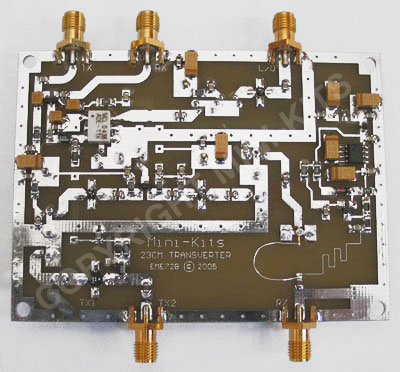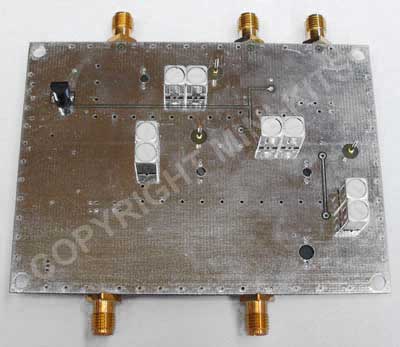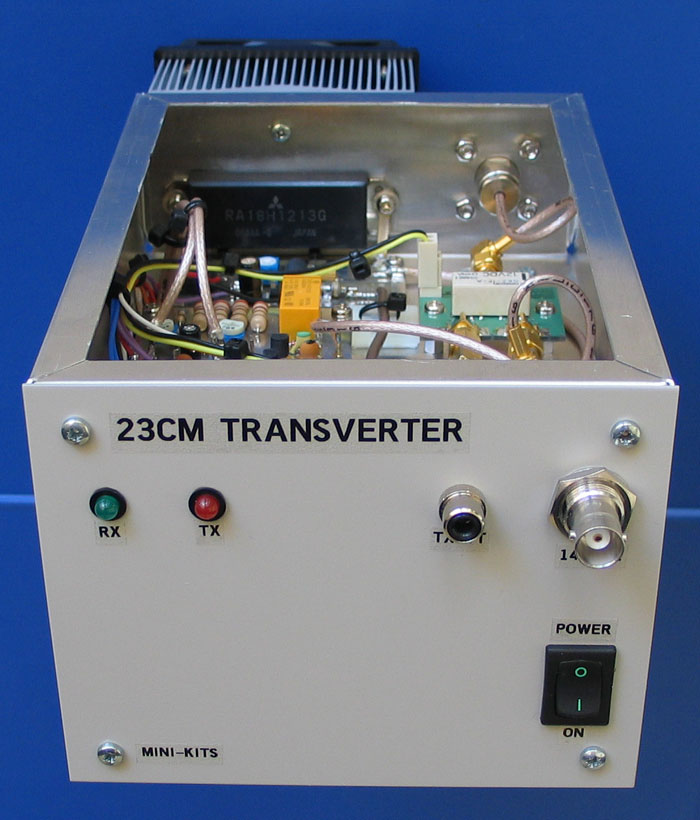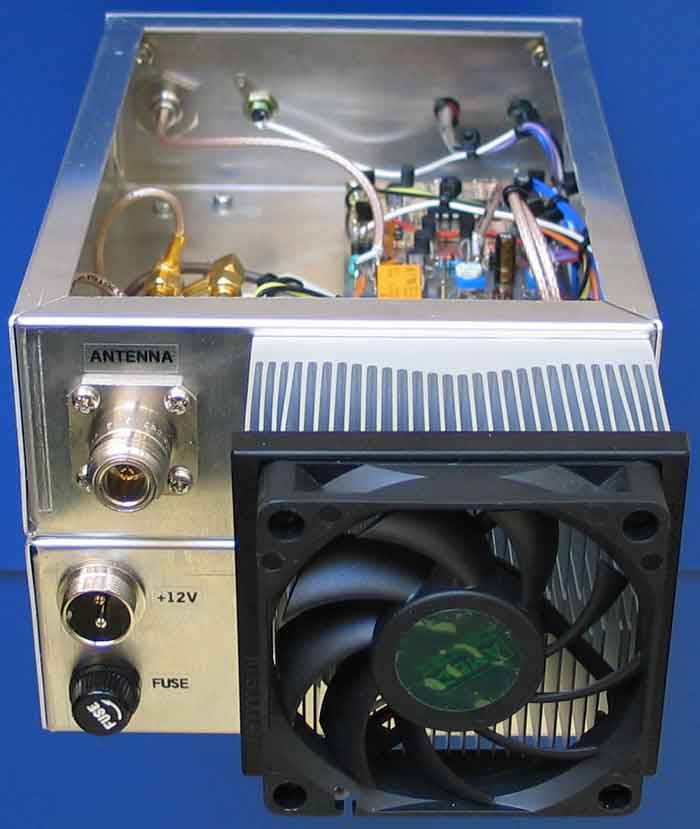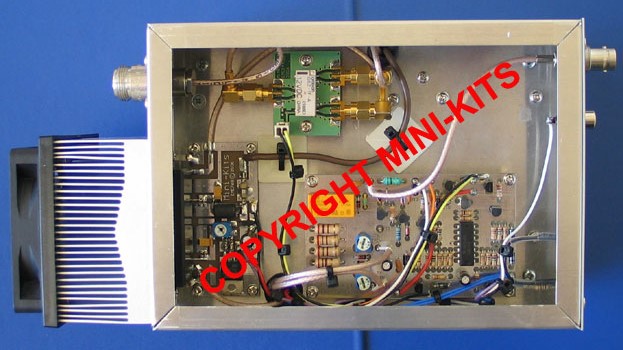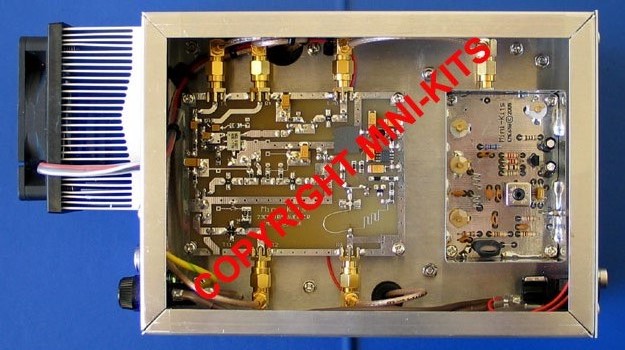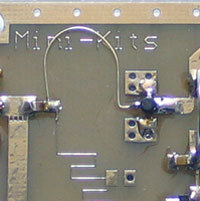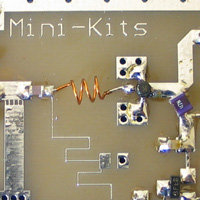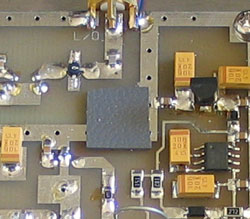EME72 23cm Transverter Kit ( Pre 2013 )
- EME72 Kit Description:
Updated! June 2022 - Download the complete Kit Notes:
- EME72 Transverter Block Diagram:
- EME72 Repeater Block Diagram:
- Kit Constructors Alert:
- Construction Notes:
- EME72B Tests:
- What other Components are required:
- Mounting Into an Enclosure:
- Kit changes and Updates:
The Mini-Kits EME72B is a very popular Transverter design for the 23cm band, and hundreds have been sold since the first version back in 2008. The Kit was easy to construct, and minimal was tuning is only required due to the wide 20MHz BW helical filters. A number of Kits including a 576MHz local oscillator and sequencer etc are required to make a complete Transverter
1/
A number of changes have been made to this Kit due to some components becoming obsolete over time. If you are constructing this Kit after September 2010, then please refer to the updates section below for changes that have been made before construction.
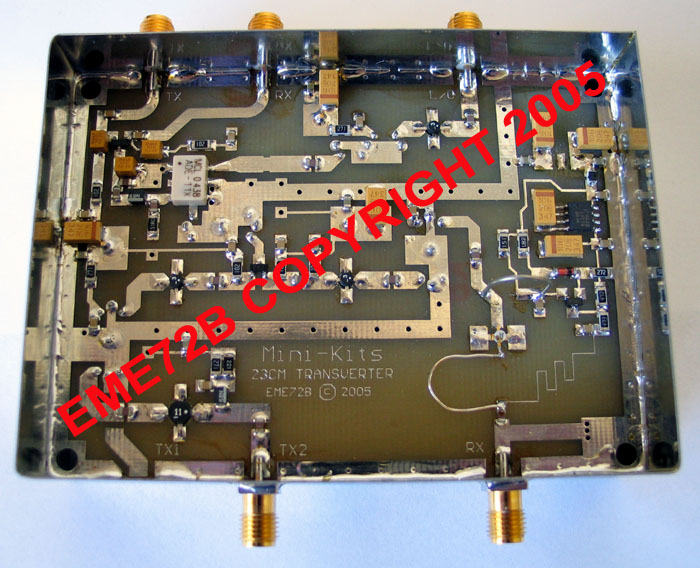 The above image shows how the components are soldered to the EME72B board. A 25mm wide Tinplate strip is soldered around the board to make it easy to mount the SMA09 connectors. The 4 x mounting lugs on the SMA09 connectors are broken off with a pair of pliers, and then the backs are filed flat and soldered to the Tinplate box.
The above image shows how the components are soldered to the EME72B board. A 25mm wide Tinplate strip is soldered around the board to make it easy to mount the SMA09 connectors. The 4 x mounting lugs on the SMA09 connectors are broken off with a pair of pliers, and then the backs are filed flat and soldered to the Tinplate box.
A number of Kits and Components are required to construct a complete Transverter. The 23cm Transverter Block Diagram outlines the Kits required to construct a complete Transverter.
For the 576MHz Local Oscillator, the EME175 Kit can be used. The EME177 Heater Kit is high recommended when used with the 60 degree C Crystals from Mini-Kits For more information on the EME175 oscillator, and EME177 Heater Kits please see the EME175 Kit web page.
For sequencing and switching of the RF and power supply voltages the EME166 Sequencer Kit is highly recommended.
For Antenna switching, the EME225 HF3-53 Relay Kit is ideal, and will handle at least 20Watts of RF at 1200MHz.
For a Power Amplifier the Mitsubishi RA18H1213G Kit can be used that will produce up to 18Watts output on 1200MHz.
The prototype Transverter below uses 2 x Hammond 1444-12 Aluminium Chassis enclosures ( 178x127x51mm ) which were bolted together. The construction is very time consuming due to the small size of the enclosures, and larger enclosures are recommended for inexperienced constructors. The front panel was cut from 1mm Aluminium sheet, and a white plastic Avery label was printed on a laser printer and stuck onto the panel. The heat sink is a P4 Pentium which was surplus from an old PC. The heat sink however should have a fan if the Transverter is to be operated on modes like FM.
Mounting the PA module at right angles to the PA board is not recommended as the RF grounding between the rear of the module and the PC board is critical on 1200MHz. Some initial problems with oscillation from the PA module were found due to the large distance between the outer of the coaxial cable where it terminates, and the actual modules RF ground. Re routing the coaxial cables to various positions in the enclosure fixed the problem but a spectrum analyzer is required to test for the oscillation. It is highly recommended that the PA module and PC board are mounted flat inside a RF tight enclosure, and bolted to a heat sink.
Please Note: The EME162-1200MHz 1Watt driver amplifier is not shown in the above picture and is required to drive the 20Watt Mitsubishi RA18H1213G amplifier to 20Watts or more.
1/
2/
3/
4/ Instability of the MGF1302 or receiver taking off. This is due to a problem on the Local Oscillator input to the ERA3 Amplifier. A small square piece of ferrite absorb can be placed on the circuit board between the Pre-amplifier section and the ERA3 multiplier shown in the image above. You might find some ferrite absorb material in an old 12GHz Satellite LNB. I think its a 50ohm mismatch problem but these are difficult problems to fix.
5/ A number of constructors have had to replace the ADE11X mixer. I am still unsure if it is due to manufacturing problems or if it has been overheated when it is soldered to the board. Symptoms are low TX output and low gain receiver. Driving the Mixer with excessive 144MHz power can also damage it.
6/ The TX output from the EME72 is not really enough to drive a RA18H1213G module to full power, ( 20 Watts ). Recent tests on the RA18H1213G modules gain has been around 23dB, where as earlier batches we were getting 27dB, but I am unsure if Mitsubishi has changed the modules internally. Along with this the EME72 has lost some gain in current Transverters which may be due to extra losses in the mixer and gain stages that only allows around +10dBm output compared to around +13dBm on older Kits. So total loss could be around 7dB with current Kits. A 0.5 Watt driver Kit EME162 was available from Mini-Kits to drive the RA module to full output power.
7/ The EME72 23cm Transverter can be used for FM repeater operation with the addition of an extra EME65 / EME175 local oscillator and two new crystals. Please refer to the 23cm Repeater Block Diagram
The crystals chosen give a 20MHz split and cover the following ranges with a 144 to 148MHz I/F.
EME65 LO1. 95.750MHz crystal x2 x3 = 574.500MHz x2 = 1149MHz mix with 144-148MHz = 1293 to 1297MHz
EME65 LO2. 94.08333MHz crystal x2 x3 = 564.500MHz x2 = 1129MHz mix with 144-148MHz = 1273 to 1277MHz
This allows for coverage of the 1296MHz SSB segment plus the 1273/1293 MHz Repeater segment.

